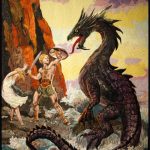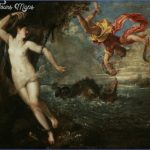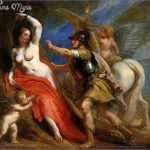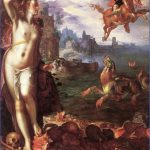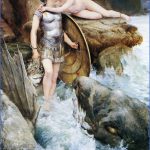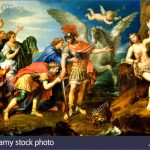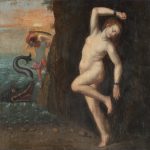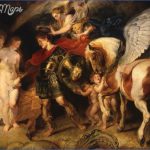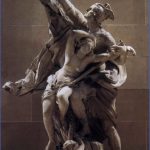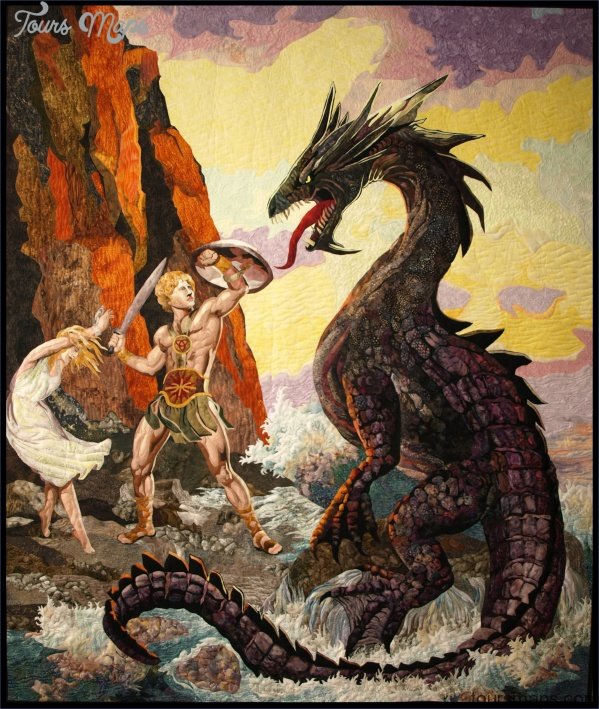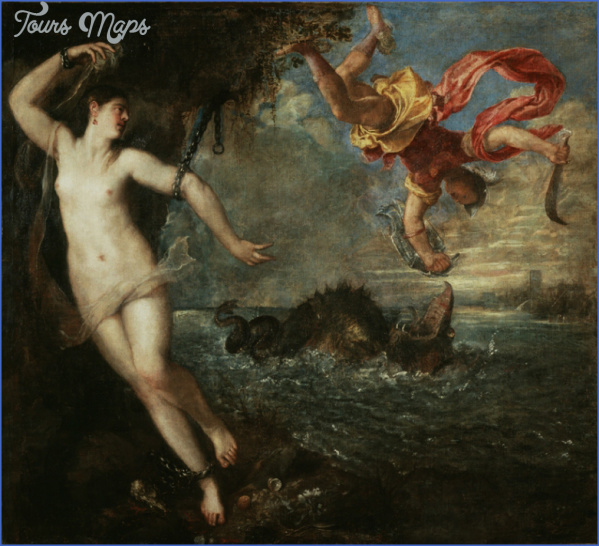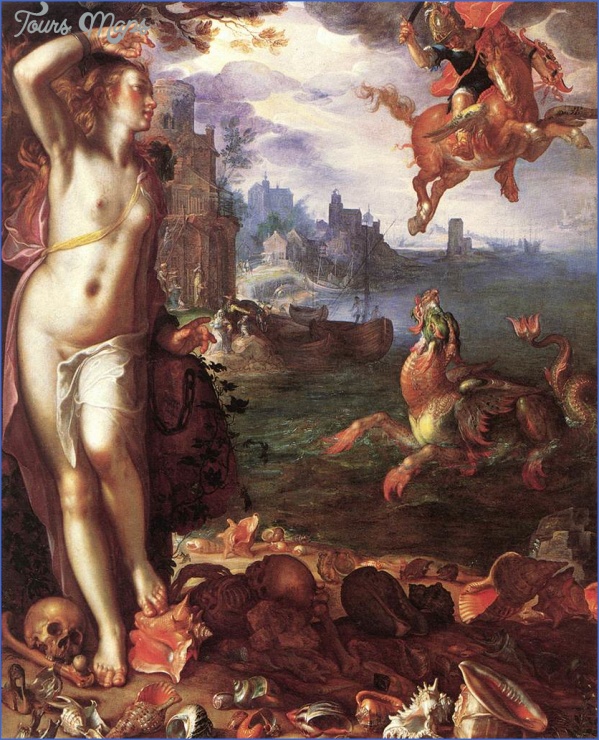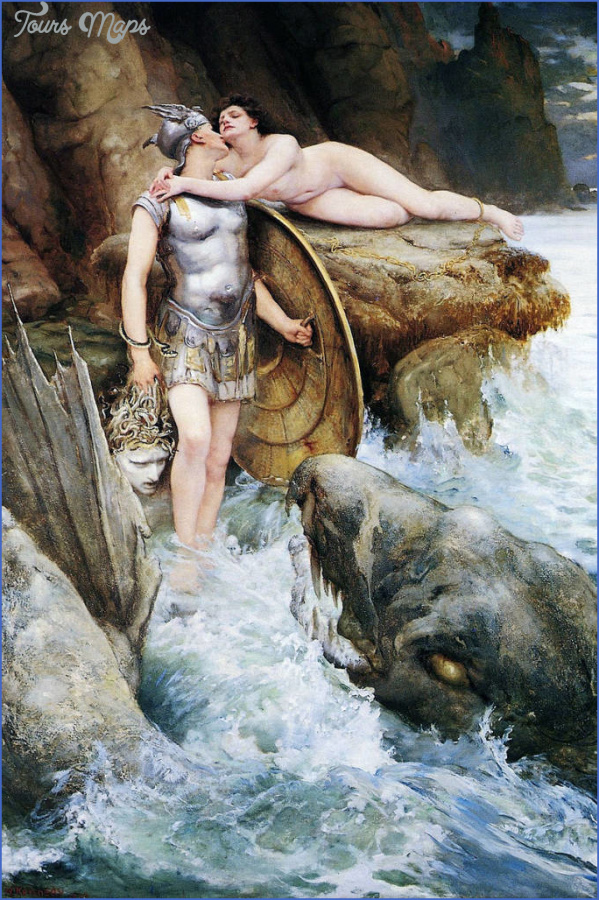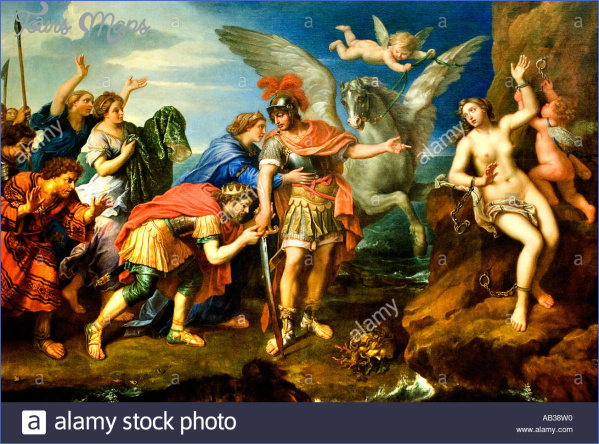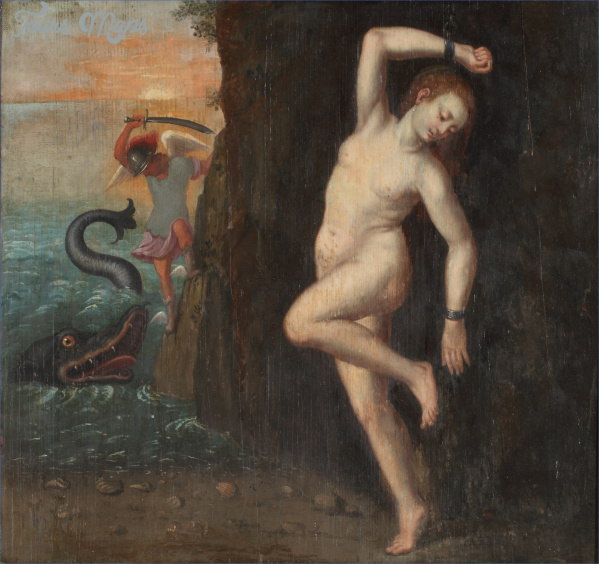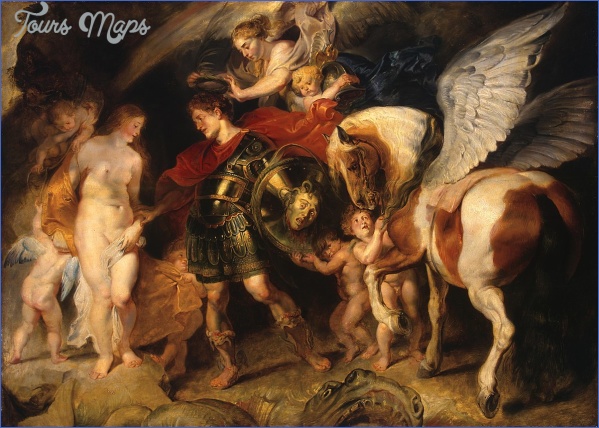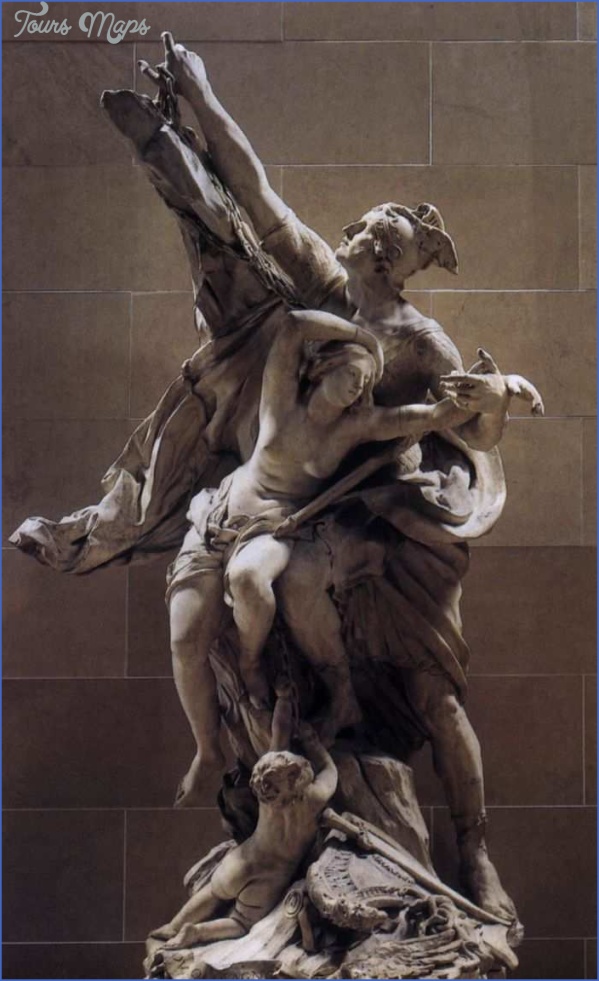As he passed over Ethiopia, Perseus saw a beautiful young girl tied naked to a stake beside the seashore. Even as he approached, the waves frothed and parted and a monster reared up in front of her. Perseus acted swiftly. Calling on the girl to close her eyes, he swooped down, and, averting his face, pulled out Medusa’s severed head. Immediately the monster turned to stone. Carefully replacing the head, Perseus untied the girl and heard her story.
Perseus, Andromeda & Home to Argos Photo Gallery
She was Andromeda, the daughter of King Cepheus and Queen Cassiopeia. Poseidon was angered when her parents boasted that she was more beautiful than the sea-nymphs, so he first flooded their land and then sent the monster to ravage it. Only by showing their willingness to sacrifice Andromeda to its appetite would they appease Poseidon’s anger. Amid general rejoicing Perseus claimed Andromeda as his bride, and together they returned to Seriphos.
Polydectes, seated in his crowded hall, sneeringly enquired whether Perseus had completed his task. Silently, his eyes locked on Polydectes, Perseus lifted out the head. Its effect was inescapable and instant. Polydectes and his attendants froze like marble statues. Danae and Dictys were overjoyed. Approving his mother’s marriage to the fisherman, Perseus set off with Andromeda for Argos.
Perseus’ grandfather Acrisius was now living in Larissa in Thessaly, so they made a detour to meet him According to Pausanias:
Perseus was in the prime of youth and excited because he had just invented the discus. He was giving displays to all and sundry when, as luck dictated, Acrisius wandered unseen into his discus’ path. The god’s prophecy was fulfilled, and the inevitable was not put off by his precautions involving his daughter and her son.
Devastated, Perseus returned to Argos, where local tradition told that he buried Medusa’s head in the agora beneath an earthen mound. Others suggest he gave it to Athene, who set it into her protective snake-fringed aegis. In Classical times, images of Medusa’s head appeared on warriors’ shields to terrify the enemy, and in mosaics and sculptures to ward off evil. A running gorgon formed the centrepiece of the west pediment of the early sixth-century bc Temple of Artemis in Corcyra on Corfu.
Reluctant to rule Argos, Perseus exchanged kingdoms with his cousin Megapenthes, receiving from him Tiryns and Mycenae.
Maybe You Like Them Too
- Theseus & Peirithous
- The Voyage of the Argo Begins
- Minos, his Loves & his Family
- The Centaurs
- Athens in History & Today

